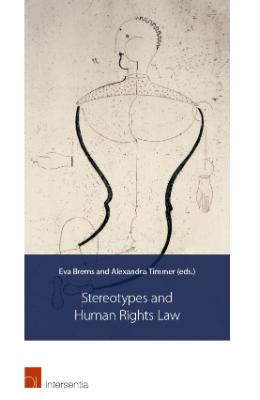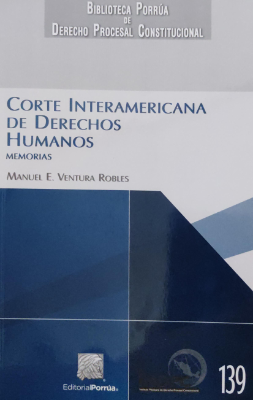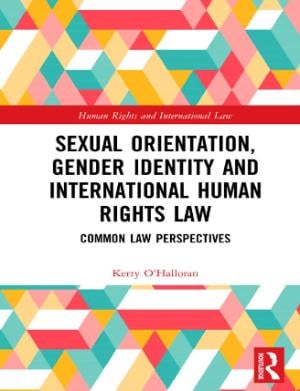
|
Stereotypes and Human Rights Law
Stereotyping has emerged as a human rights law topic. Stereotypes assign certain roles and characteristics to a group. Examples include the notions that women are nurturing and weak, men combative and powerful, and gays promiscuous and unsuited to parenting. Such stereotypes can deeply impact the enjoyment of human rights. They reinforce inequality and discrimination. Several human rights treaties therefore mention that states are under an obligation to combat stereotyping. Examples include Article 5(a) of the Convention on the Elimination of All Forms of Discrimination against Women (CEDAW); Article 8(b) of the Convention on the Rights of Persons with Disabilities (CRPD); and Articles 12 and 14 of the Council of Europe Convention on preventing and combating violence against women and domestic violence (the Istanbul Convention). Increasingly, human rights courts and treaty bodies – including the European Court of Human Rights (ECtHR), the Inter-American Court of Human Rights (IACtHR), the CEDAW Committee, and the Committee on the Elimination of Racial Discrimination (CERD) – voice concerns about stereotyping and insist that states should not enforce harmful stereotyp.
|

|
Corte Interamericana de Derechos Humanos: Memorias
En esta publicación, quien fungió como vicepresidente, juez, secretario y secretario adjunto de la Corte Interamericana de Derechos Humanos, desde 1979 hasta el 2015, relata desde su perspectiva personal el nacimiento y evolución de esta institución trascendental en el contexto jurídico americano. Testigo privilegiado de los cambios y vicisitudes de la institución y del sistema interamericano de derechos humanos, nos describe en sus propias palabras anécdotas, paradigmas, dificultades, logros y actuales desafíos del emblemático tribunal interamericano encargado de velar por la protección de los derechos humanos de todos los ciudadanos de las Américas.
|
|
Interpretación y argumentación en la actividad de la Corte Interamericana de Derechos Humanos
El presente trabajo se pretende una aproximación a la actividad interpretativa y argumentativa que realiza la Corte Interamericana de Derechos Humanos (Corte IDH). Para ello se efectúa una caracterización básica de su marco normativo como tribunal internacional de derechos humanos, así como de su obligación de motivar sus decisiones. Seguidamente, se analizan los métodos interpretativos a los que acude la Corte IDH para abordar los materiales jurídicos (fuentes de derecho) que utiliza y se examinan algunos de los productos argumentativos e interpretativos que incluyen en sus pronunciamientos. Finalmente, se arriesgan conclusiones acerca de las fortalezas y debilidades de dichas actividades de cara a la transparencia y a la eficacia de todo sistema interamericano de derechos humanos dado que la Corte IDH entiende que sus estándares trascienden a los procesos concretos y poseen eficacia general.
|
|
|

|
Sexual Orientation, Gender Identity and International Human Rights Law: Common Law Perspectives
This book identifies, analyses and discusses the nexus of legal issues that have emerged in recent years around sexuality and gender. It audits these against specific human rights requirements and evaluates the outcomes as evidenced in the legislation and caselaw of six leading common law jurisdictions. Beginning with a snapshot of the legal definitions and sanctions associated with the traditional marital family unit, the book examines the subsequently evolving key concepts and constructs before outlining the contemporary international framework of human rights as it relates to matters of sexuality and gender. It proceeds by identifying a set of themes, including the rights to identity, to form a family, to privacy, to equality and to non-discrimination, and undertakes a comparative evaluation of how these and other themes indicate areas of commonality and difference in the approathes adopted in those common law jurisdictions, as illustrated by the associated legislation and caselaw. It then considers why this should be and assesses the implications.
|
|
|
El Caso “Campo Algodonero” ante la Corte Interamericana de Derechos Humanos
Después de describir el contexto generalizado de violencia y discriminación hacia las mujeres en México y resumir los hechos del caso “Campo Algodonero”, el autor analiza en este artículo las principales razones jurídicas por las cuales la sentencia de la Corte Interamericana de Derechos Humanos debe ser considerada como una de las más relevantes dentro de su jurisprudencia
|
|
|
|
|